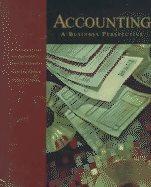


THE FOLLOWING RESIDUE PAIRS MIGHT FORM A DISULFIDE BRIDGE ACCORDING TO THEIR CB-CB DISTANCE. WHICH LIES BETWEEN 3.29 AND 4.36 ANGSTROM CORRESPONDING TO CHI-3 ANGLES OF +/- 90, +/- 44.8 DEGREES NR RES1 1 5 2 19 3 22 4 23 5 29 6 30 7 32 8 34 9 34 RES2 185 70 68 61 56 101 56 45 60 NAME1 NAME 2 ALA ALA ARG ASP ALA ASP TYR CYS GLY GLY ASP ARG ILE GLY PHE TRP PHE ALA CB DIST 3.967 4.045 3.557 4.355 4.183 4.187 4.201 4.283 4.148 CA DIST 6.267 5.800 5.422 4.133 4.228 6.076 6.023 7.126 4.780 a) How many residue pairs are identified by SSBOND? b) Floor and coworkers used the Dynamic Disulfide Discovery algorithm', which they developed previously,4 to predict disulfide cross link locations. That algorithm yielded seven residues pairs. (You do not need to look up the details of this algorithm.) The Dynamic Disulfide Discovery algorithm excludes residue pairs that are within 15 positions of each other. Explain why this is a good idea. If you apply this criterion to the results of SSBOND, how many residues pairs are still suitable for engineering? c) Besides excluding residues pairs that are within 15 positions of each other, suggest another criteria that you could use to exclude a suggested pair. d) The apparent melting temperatures for the wild type and two of the variants are listed below. In which variant did the disulfide bond stabilize the protein? Explain how you came our conclusion. For the variant that did not stabilize the protein, suggest a reason why it did not work based on the data in the table. Explain your reasoning. to Substitutions Tm(oxidized) Tm(reduced) none (wt) 51 C 49 C A5C/A185C 56 C 49 C R20C/D70C 50 C 45.5 C e) Compare a prediction to a measured value. For the prediction, use equation 3.14 in the text to predict the expected Gibbs energy of stabilization for the two variants in question 3 above. For the experimental values, estimate the measured Gibbs energy of stabilization from the change in Tm using equation 3.11 of the text. Comment on the match or mismatch between predictions and measured values. THE FOLLOWING RESIDUE PAIRS MIGHT FORM A DISULFIDE BRIDGE ACCORDING TO THEIR CB-CB DISTANCE. WHICH LIES BETWEEN 3.29 AND 4.36 ANGSTROM CORRESPONDING TO CHI-3 ANGLES OF +/- 90, +/- 44.8 DEGREES NR RES1 1 5 2 19 3 22 4 23 5 29 6 30 7 32 8 34 9 34 RES2 185 70 68 61 56 101 56 45 60 NAME1 NAME 2 ALA ALA ARG ASP ALA ASP TYR CYS GLY GLY ASP ARG ILE GLY PHE TRP PHE ALA CB DIST 3.967 4.045 3.557 4.355 4.183 4.187 4.201 4.283 4.148 CA DIST 6.267 5.800 5.422 4.133 4.228 6.076 6.023 7.126 4.780 a) How many residue pairs are identified by SSBOND? b) Floor and coworkers used the Dynamic Disulfide Discovery algorithm', which they developed previously,4 to predict disulfide cross link locations. That algorithm yielded seven residues pairs. (You do not need to look up the details of this algorithm.) The Dynamic Disulfide Discovery algorithm excludes residue pairs that are within 15 positions of each other. Explain why this is a good idea. If you apply this criterion to the results of SSBOND, how many residues pairs are still suitable for engineering? c) Besides excluding residues pairs that are within 15 positions of each other, suggest another criteria that you could use to exclude a suggested pair. d) The apparent melting temperatures for the wild type and two of the variants are listed below. In which variant did the disulfide bond stabilize the protein? Explain how you came our conclusion. For the variant that did not stabilize the protein, suggest a reason why it did not work based on the data in the table. Explain your reasoning. to Substitutions Tm(oxidized) Tm(reduced) none (wt) 51 C 49 C A5C/A185C 56 C 49 C R20C/D70C 50 C 45.5 C e) Compare a prediction to a measured value. For the prediction, use equation 3.14 in the text to predict the expected Gibbs energy of stabilization for the two variants in question 3 above. For the experimental values, estimate the measured Gibbs energy of stabilization from the change in Tm using equation 3.11 of the text. Comment on the match or mismatch between predictions and measured values









